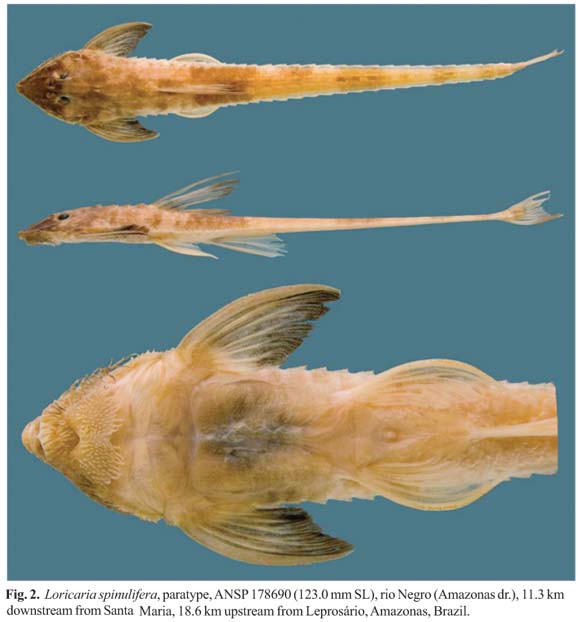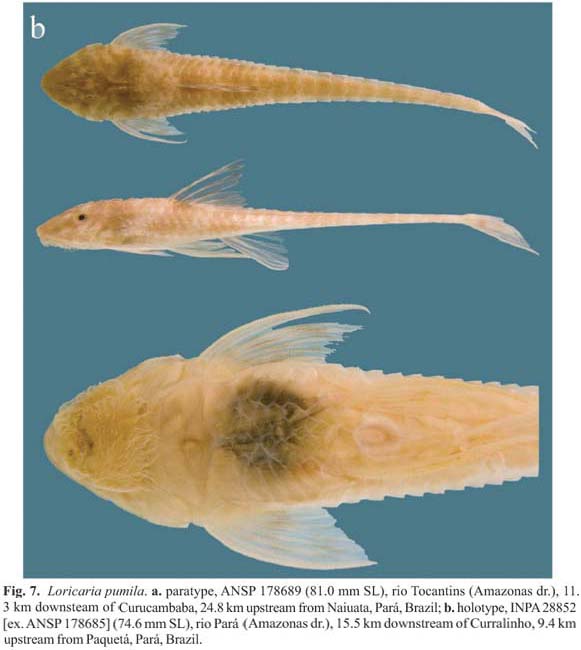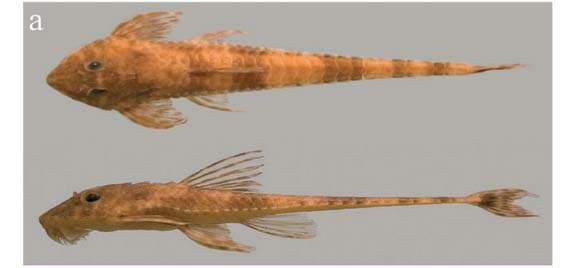Three new species of Loricaria are described from large white- and black-water river channels of the Amazon basin of Brazil, the upper rio Negro drainage of southern Venezuela, and clear waters of the lower rio Tocantins. Loricaria spinulifera and L. pumila differ from other species of Loricaria by having unique patterns of abdominal plate development and hypertrophied odontodes forming conspicuous crests on dorsal surfaces of the head and predorsal plates. Both are small species of Loricaria, reaching sexual maturity at less than 120 mm SL, and exhibiting sexually dimorphic characters consistent with members of the L. cataphracta complex. Loricaria spinulifera differs from L. pumila in having a unique arrangement of buccal papillae and large thorn-like odontodes on the dorsum of the head. Loricaria pumila is the smallest known Loricaria, reaching sexual maturity at less than 80 mm SL. Loricaria lundbergi differs from other Loricaria by having a unique abdominal plate pattern, broad head, and small basicaudal plate. Loricaria lundbergi is sympatric with L. spinulifera in the lower rio Negro drainage, but is also known from the rio Baria system of the Casiquiare drainage. Loricaria pumila occurs in the lower rio Amazonas and lower rio Tocantins. All three new species exhibit varying degrees of reduction in eye size and pigmentation seen in other fishes inhabiting deep river channels of South America.
Neotropical; Taxonomy; Loricariinae; Calhamazon; Rio Negro














